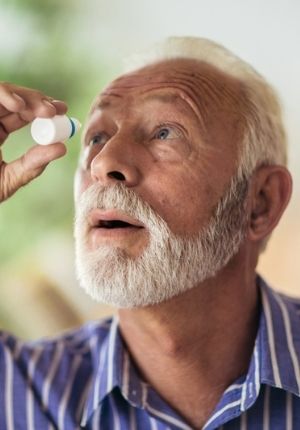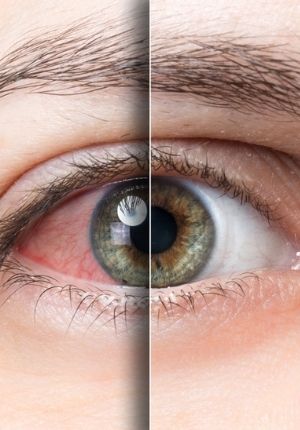Dry Eye
What Is Dry Eye?
Dry Eye Disease occurs when the eyes do not produce enough tears or the tears evaporate too fast. Generally, it is not a sight-threatening condition but if left untreated, the symptoms such as itching, discomfort, and irritation can become aggressive increasing the risk of infection and other visual issues.
The Tear Film – Our eyes require a constant layer of tears known as the tear film. It maintains and protects the sensitive surface tissues. Dry eye syndrome occurs when there is a lack of adequate tears.
It is important for patients with this condition to take special care of their eyes in order to alleviate symptoms and prevent complications. The diagnosis of Dry Eye is often missed because allergy, eyestrain, and fatigue mimic similar symptoms.


Main Causes
Aqueous Deficient Dry Eye (DED)
Aqueous Deficient Dry Eye is characterized by a lacrimal gland malfunction, which causes the tear production to be insufficient to maintain an optimal ocular surface.
DED is a persistent inflammatory condition of the eye’s surface that has increasingly strong links to autoimmune diseases such as diabetes, thyroid disease, and rheumatoid arthritis.
Evaporative Dry Eye (MGD)
Evaporative Dry Eye (MGD) is when the outer lipid layer of the normal tear film is inadequate, rapid tear film evaporation occurs and results in (MGD). This often occurs when the meibomian glands in the eyelids are inflamed or damaged.
Patients can simultaneously suffer from both Aqueous Deficient and Evaporative Dry Eye.
A Schirmer tear test and a Tearlab Osmolarity testing are diagnostic tools used to measure the amount of tears produced by the eye. Both are effective ways to diagnose dry eye following a comprehensive examination of your eyes.
Dry eye can be effectively treated with a variety of eye drops and eye care products.


Why Us?

Latest Technology
Industry-leading vision correction treatments and procedures

Patient-centered Care
Advanced and personalized eye care for you and your family

Board-certified Surgeons
Leading ophthalmologists with extensive experience